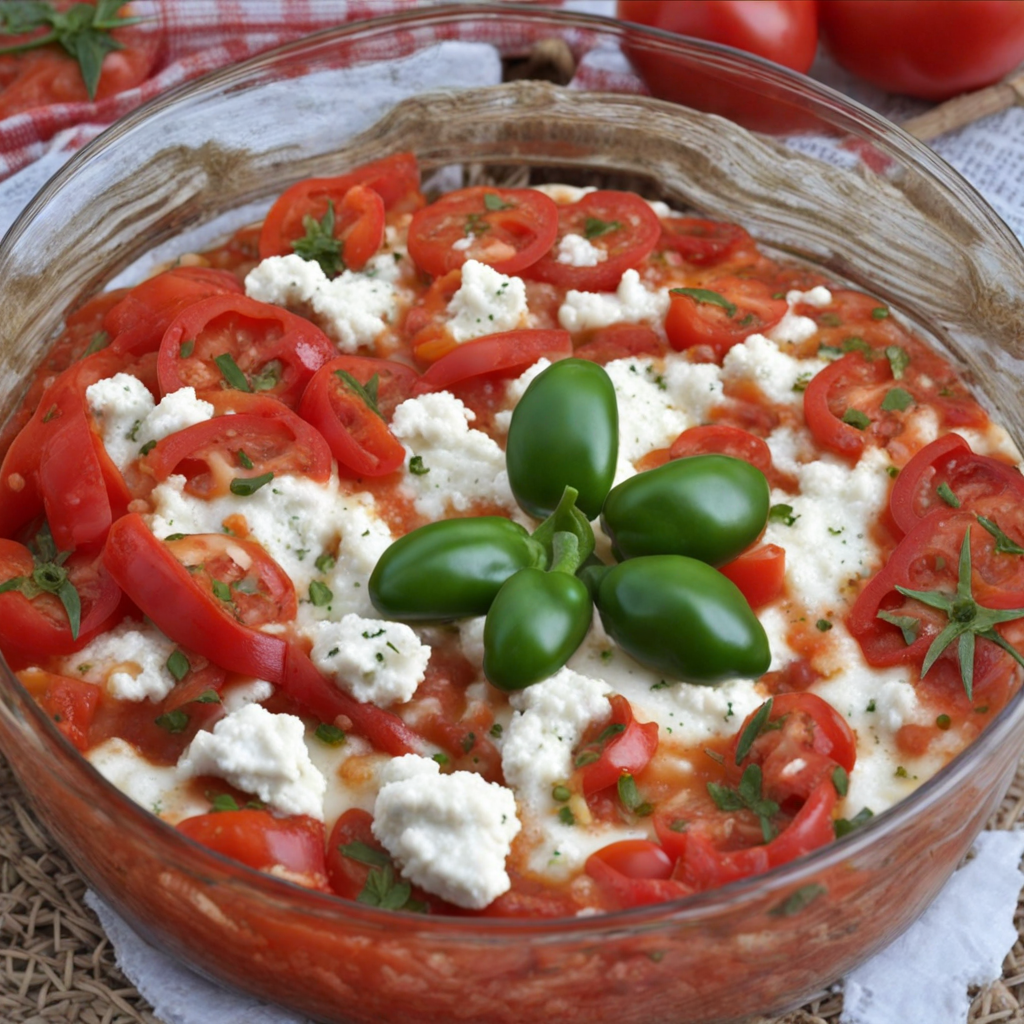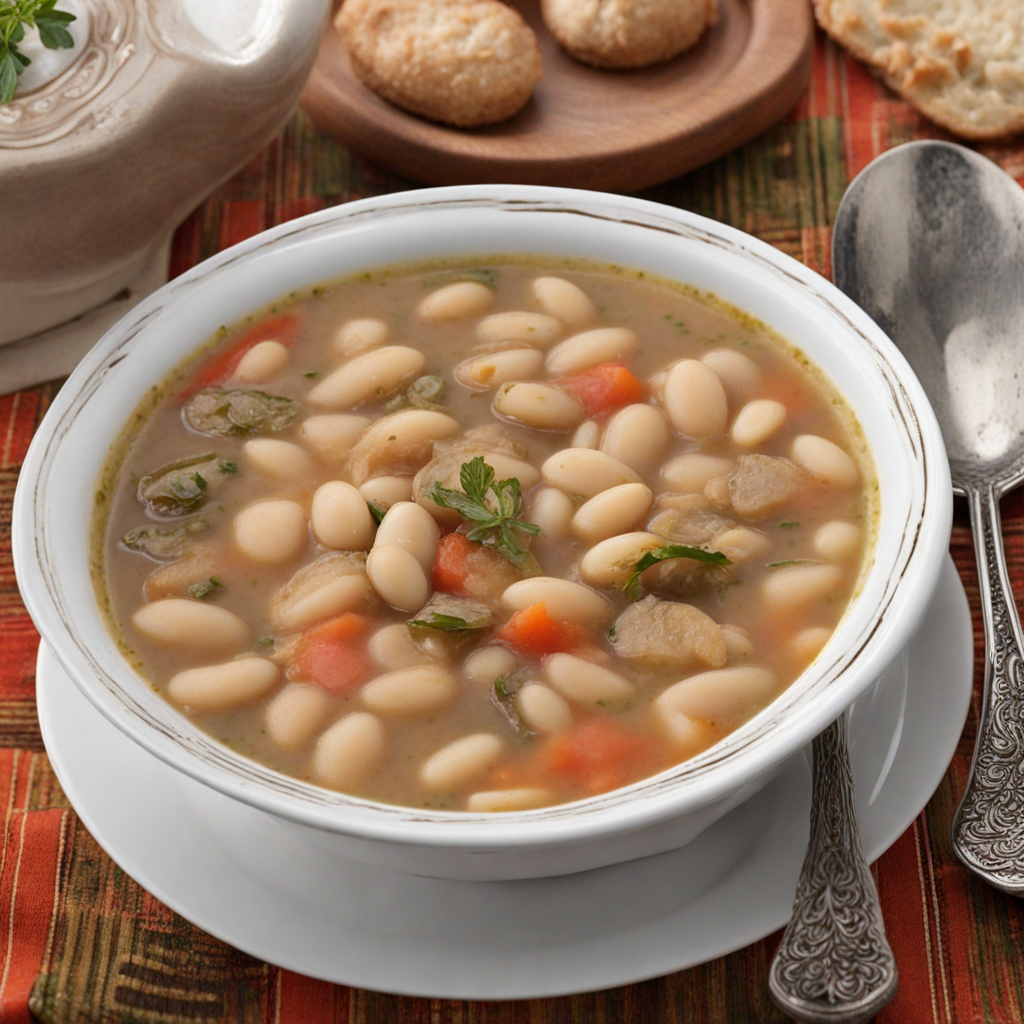Fërgesë
Fërgesë is a traditional Albanian dish that beautifully encapsulates the rich culinary heritage of the country. This hearty and comforting meal is primarily made from a base of roasted red peppers, tomatoes, and soft white cheese, often resembling a blend of ricotta and feta. The peppers are roasted until their skins are charred and smoky, infusing the dish with a deep, complex flavor. The tomatoes add a touch of sweetness and acidity, while the cheese brings a creamy texture that binds all the elements together. This delightful combination is often enhanced with the addition of garlic and various herbs, such as parsley or basil, to elevate the taste profile even further. The preparation of Fërgesë can vary, with some recipes incorporating minced meat, like beef or lamb, to create a more substantial meal. In other variations, the dish can be vegetarian, focusing solely on the vibrant vegetables and cheese. Once cooked, Fërgesë is typically served hot, either as a standalone dish or alongside crusty bread, which is perfect for scooping up the luscious mixture. The dish is not only flavorful but also visually appealing, showcasing a vibrant red hue that is inviting and appetizing. Fërgesë is often enjoyed as a comfort food, making it a staple in many Albanian households, especially during gatherings and celebrations. Its rustic charm and straightforward ingredients reflect the simplicity and warmth of traditional Albanian cooking. For those seeking to explore new culinary horizons, Fërgesë offers a unique taste experience that embodies the essence of Albania's rich agricultural bounty and time-honored recipes, making it a dish worth discovering.
How It Became This Dish
The Rich History of Fërgesë: A Culinary Gem of Albania Fërgesë is more than just a dish; it is a symbol of Albanian culture, history, and the warmth of its people. This traditional food, often prepared with a blend of peppers, tomatoes, and cheese, has deep roots in the culinary practices of Albania, particularly in the regions of Tirana and Elbasan. Its journey from humble beginnings to a cherished national dish reflects the evolution of Albanian society, its agricultural practices, and its cultural exchanges over centuries. #### Origins of Fërgesë The origins of fërgesë can be traced back to the rustic kitchens of Albania, where local ingredients were used to create hearty meals. The use of peppers and tomatoes in Albanian cuisine is deeply entrenched, dating back to the Ottoman Empire's influence, which introduced a variety of vegetables and cooking techniques to the region. Fërgesë is believed to have emerged as a means to make use of the abundant agricultural produce, particularly during the summer months when vegetables were in season. The dish is generally made with roasted red peppers, tomatoes, and a type of soft cheese, traditionally known as “djathë i bardhë,” which is similar to feta. The combination of these ingredients creates a rich and savory flavor profile that is both comforting and satisfying. The cooking method, often involving slow simmering or baking, enhances the flavors and brings out the natural sweetness of the vegetables. #### Cultural Significance Fërgesë holds a special place in the hearts of Albanians. It is often associated with family gatherings, celebrations, and traditional feasts. The preparation of fërgesë is typically a communal activity, where family members come together to chop vegetables, mix ingredients, and share stories. This aspect of communal cooking fosters a sense of belonging and reinforces familial bonds, making the dish a cornerstone of Albanian hospitality. Moreover, fërgesë is frequently served during significant cultural and religious events, such as weddings and religious holidays. Its presence at the table symbolizes abundance and the sharing of blessings among loved ones. In many ways, fërgesë embodies the spirit of Albanian culture: it is simple yet rich, humble yet celebratory. #### The Development Over Time As Albania underwent various social and political changes throughout the 20th century, so too did its culinary landscape. The socialist regime that took power after World War II emphasized agricultural self-sufficiency and the importance of traditional foods. Fërgesë, with its reliance on locally sourced ingredients, became a staple in Albanian households. The dish was often prepared in large quantities, making it ideal for feeding families during difficult times. In the post-communist era, Albania began to open up to the world, leading to a modernization of its culinary scene. While traditional dishes like fërgesë remained popular, new ingredients and cooking techniques were introduced. Chefs began experimenting with variations of fërgesë, incorporating ingredients such as ground meat, different types of cheese, and spices that had previously been less common in Albanian cuisine. These innovations added layers of complexity to the dish, making it more versatile and appealing to a younger generation. Today, fërgesë is not only a beloved home-cooked meal but also a staple on restaurant menus across Albania. It has gained recognition beyond the country’s borders, with Albanian diaspora communities introducing the dish to new audiences. This globalization of fërgesë has allowed it to evolve further, as chefs and home cooks alike adapt the recipe to local tastes and available ingredients. #### Regional Variations Fërgesë is not a one-size-fits-all dish; it has regional variations that reflect the diverse culinary traditions within Albania. In Elbasan, for instance, fërgesë is often prepared with a more pronounced use of cheese, creating a creamier texture. In contrast, the version from Tirana may emphasize the sweetness of roasted peppers, often served alongside a side of crusty bread. Each region’s unique take on fërgesë showcases the local agricultural bounty and the cultural influences that have shaped Albanian cuisine. For example, in coastal areas, seafood may be incorporated into the dish, creating a delightful fusion of flavors that speaks to the region's maritime heritage. #### Fërgesë in Contemporary Culture In contemporary Albania, fërgesë continues to be celebrated as a culinary treasure. It is often featured in food festivals and cultural events, where chefs showcase their interpretations of the dish. The rise of food tourism in Albania has also put fërgesë in the spotlight, as visitors seek authentic experiences that connect them with the local culture. Social media has played a significant role in popularizing fërgesë among younger generations, with food bloggers and influencers sharing recipes and cooking tutorials. This online presence has fostered a renewed interest in traditional Albanian cuisine, encouraging home cooks to embrace their culinary heritage. #### Conclusion Fërgesë is more than just a dish; it is a representation of Albanian identity, history, and resilience. From its rustic origins to its modern-day interpretations, fërgesë carries the essence of Albania’s agricultural roots and cultural richness. As it continues to evolve and adapt, this beloved dish remains a testament to the enduring spirit of Albanian hospitality and the importance of food in bringing people together. In every bite of fërgesë, one can taste the stories of generations past, the love of family and community, and the vibrant culture that shapes Albania today. Whether enjoyed at a festive gathering or a quiet family dinner, fërgesë is a dish that embodies the heart and soul of the Albanian people, making it a true culinary gem in the tapestry of world cuisine.
You may like
Discover local flavors from Albania







